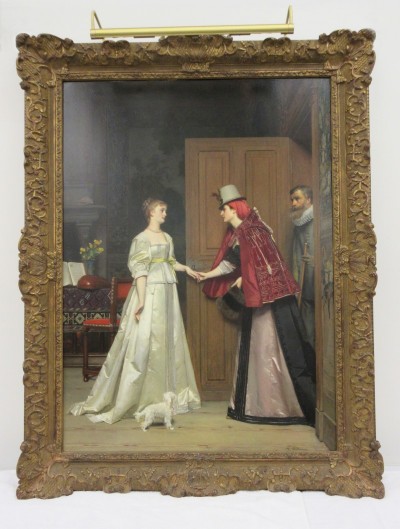

This oil painting on board by Florent Willems (1823-1905) was brought in for evaluation and treatment. Examination of the painting’s surface under normal and raking light exposed surface dirt, frame abrasions, fine craquelure, areas of blooming, and unevenness of varnish layers. To reveal a different aspect of the painting’s condition, it was also viewed under black light.
Black light is used as an examination technique to gain additional information about a painting’s structure and any previous restoration.
As soon as a painting is made it begins to age and its materials begin to oxidize. While different variables may affect what is seen under black light, areas of in-painting and retouching will likely appear darker than the original pigment because it begins oxidation at a later point in time than the original pigment.
Under black light, several darkened areas are visible throughout and suggest that this painting was retouched at two different times since its creation. While it is not uncommon for a painting of this period to have been previously restored, this information is important to consider when determining options for treatment.
